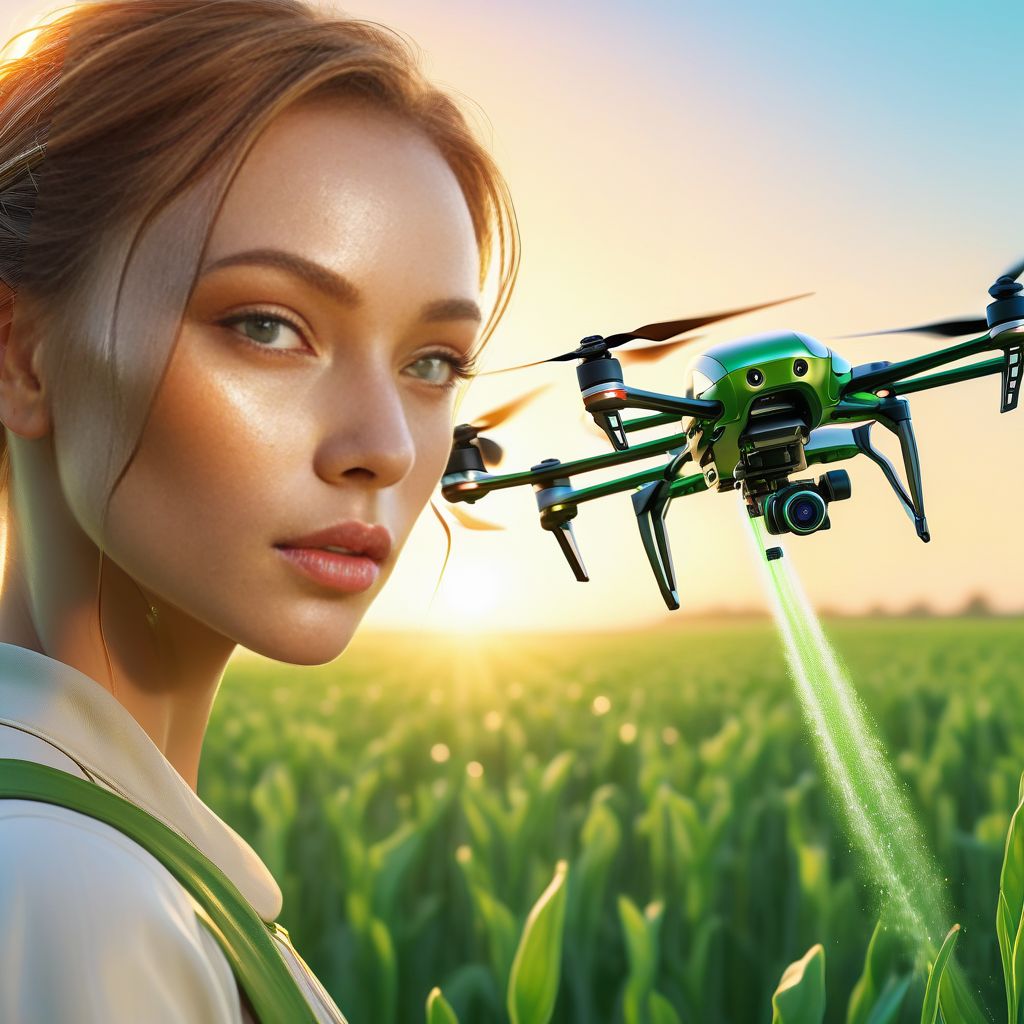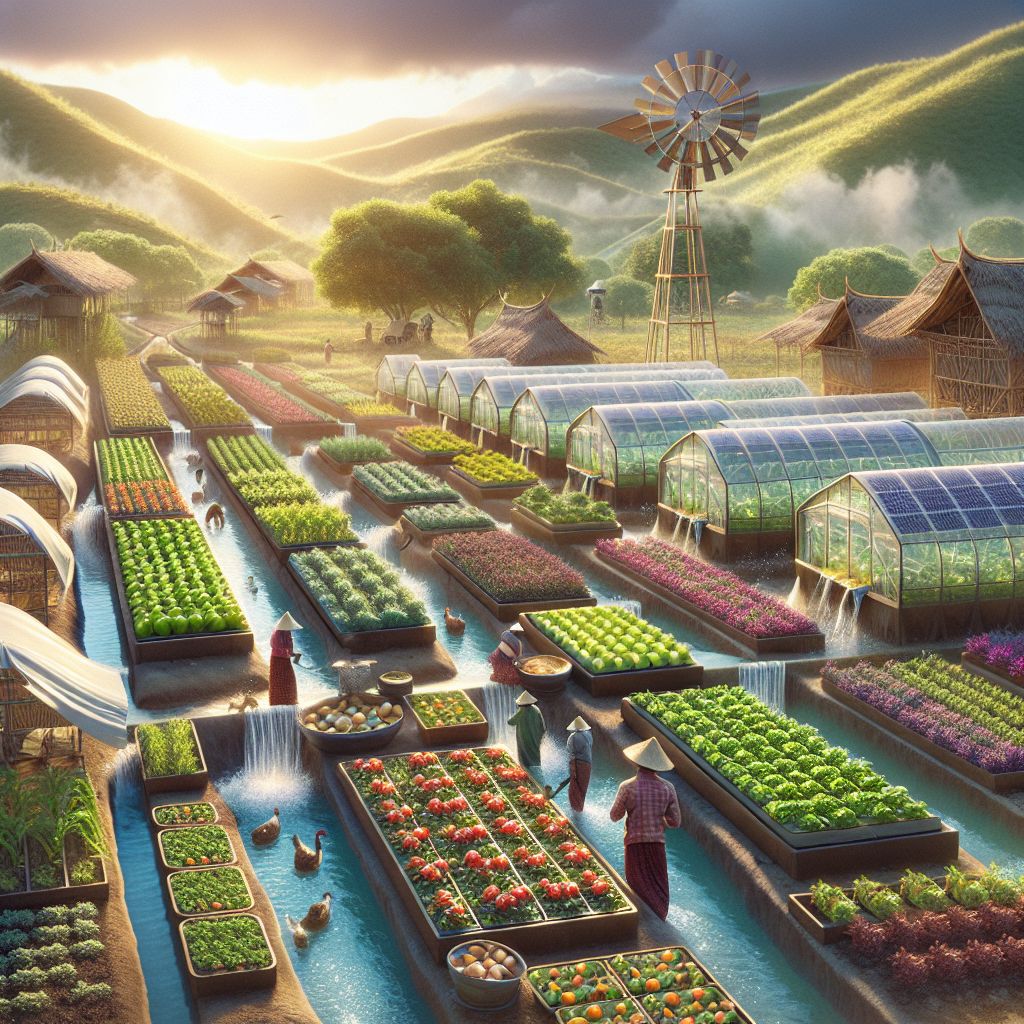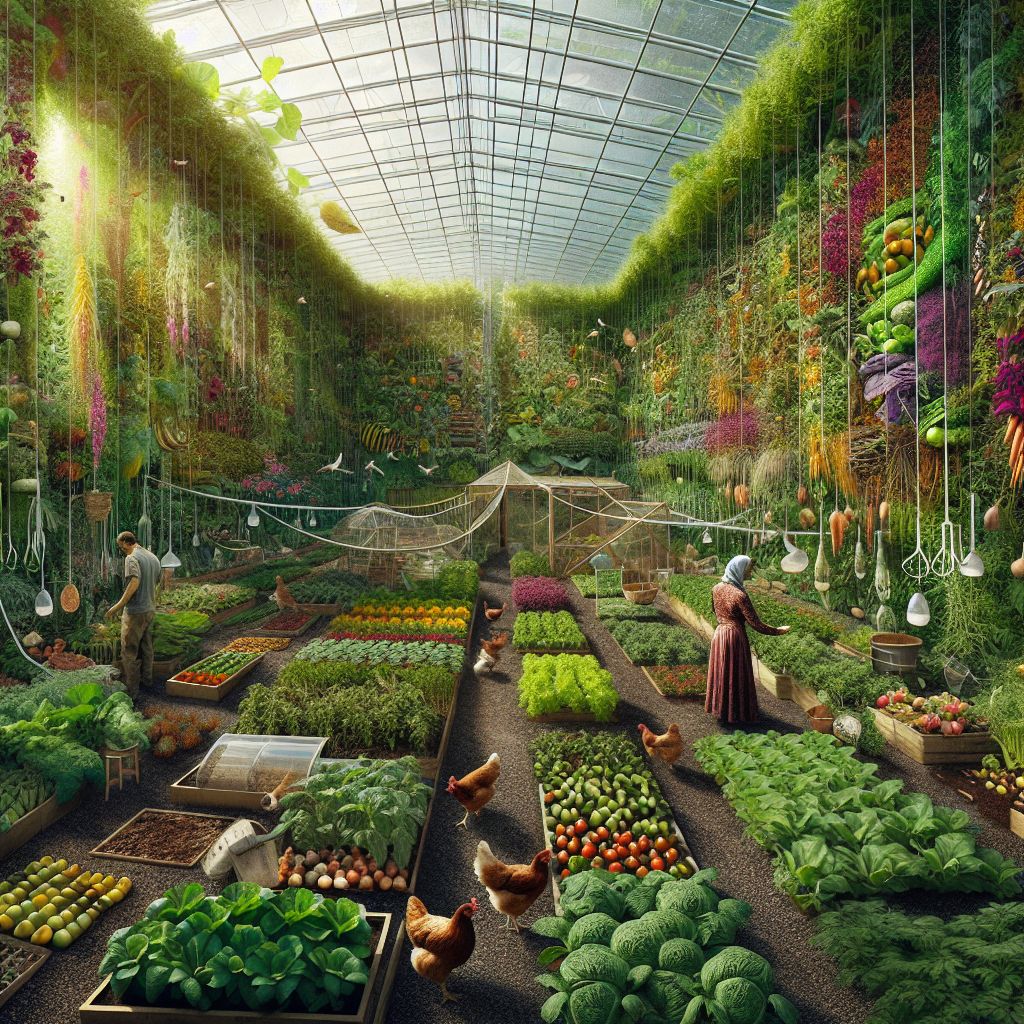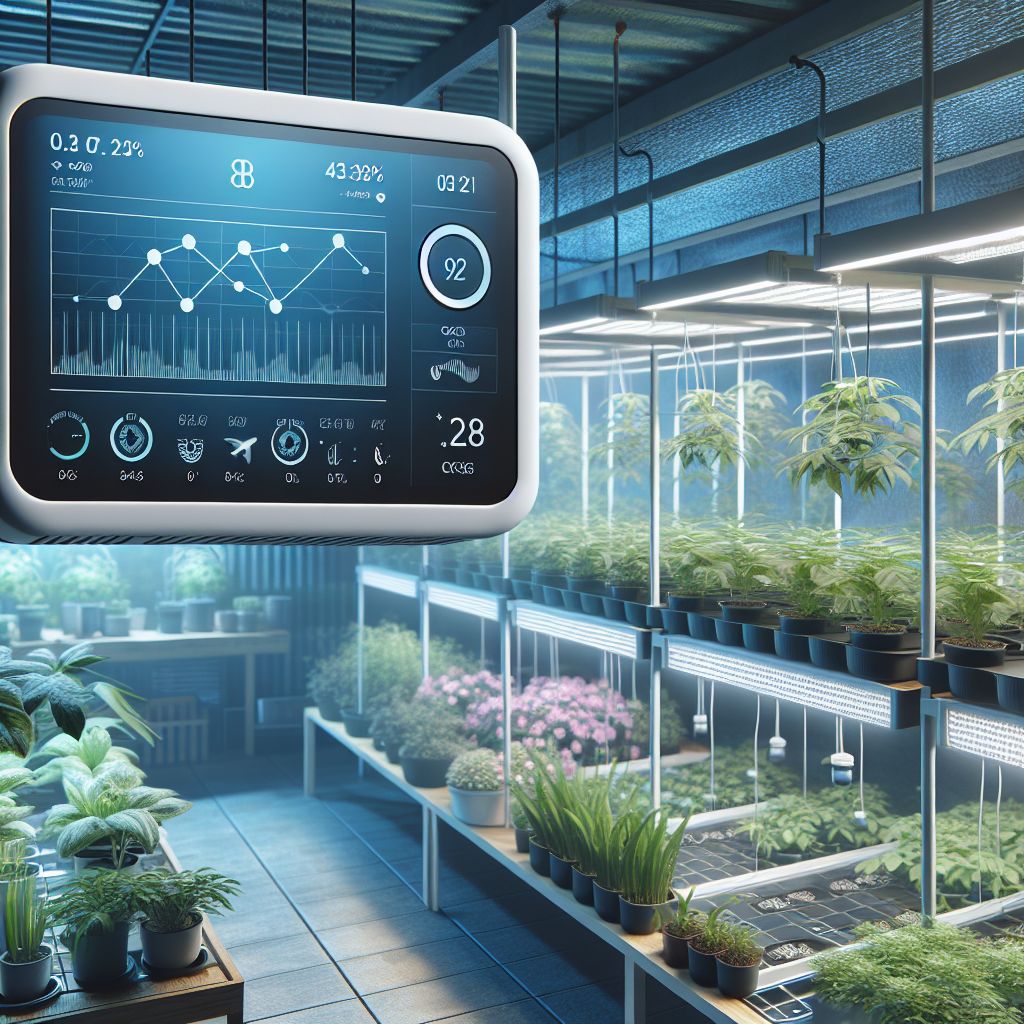Key Takeaways
- Smart agriculture tools, like mobile apps and sensors, can help farmers identify plant species and detect diseases early.
- Advanced techniques such as AI image recognition and hyperspectral imaging offer detailed insights into plant health.
- Implementing these technologies can lead to precise agriculture practices, reducing guesswork and increasing yield.
- Simple, cost-effective solutions are available for farmers of all sizes to adopt smart plant identification systems.
- Continuous learning and adaptation are essential for leveraging these tools effectively in the field.
Smart Identification Tools You Can Implement Now
Imagine walking through your fields with the power to identify every plant and detect potential diseases before they spread. It’s what today’s smart agriculture tools can do for you. Let’s explore some of the most accessible technologies you can start using right now.
Mobile Apps: Identify Plants with a Snapshot
One of the simplest tools at your disposal is a mobile app designed for plant identification. By taking a photo with your smartphone, these apps can tell you the species and offer guidance on care. They’re incredibly user-friendly and are a great first step into smart agriculture. For example, PictureThis and PlantSnap are popular apps that use AI to identify plants from images.
Automation Sensors: Monitoring Plant Health 24/7
Automation sensors placed in your fields can continuously monitor the health of your plants. These sensors track variables like soil moisture, temperature, and humidity to help you make informed decisions about irrigation and fertilization. This constant stream of data means you can act quickly to any changes in your plants’ environment.
Cloud-Based Analytics: Turning Data into Decisions
All the data collected from mobile apps and sensors can be overwhelming, but cloud-based analytics can help you make sense of it all. By storing your data in the cloud, you can use powerful analytics tools to spot trends, predict issues, and make smart decisions about your crops. This technology turns raw data into actionable insights.
Leading-edge Techniques in Plant Identification
While the above tools are a great start, there are even more advanced techniques available that can give you a deeper understanding of your plants’ health and needs. These cutting-edge systems can be game-changers for your farm.
AI and Image Recognition: A Game Changer for Farmers
Artificial intelligence (AI) and image recognition technology are revolutionizing the way farmers identify and manage plant health. By analyzing images of your crops, AI can detect subtle changes that might indicate disease or pest issues. This tech can learn and improve over time, offering more accurate diagnoses as it processes more data.
Hyperspectral Imaging: Seeing Beyond the Visible
Hyperspectral imaging is like giving super-sight to your farm management. This technology captures images beyond what the human eye can see, detecting issues at the cellular level before they become visible. It’s especially useful for large-scale operations where manual monitoring is impractical.
DNA Barcoding: Unlocking Genetic Signatures
When it comes to identifying plants, DNA barcoding is akin to a super-powered detective’s toolkit. By comparing a short genetic sequence from a plant’s DNA to a library of known sequences, it’s possible to pinpoint the species with high accuracy. This method is particularly helpful for confirming the identity of species that look similar but may have different care needs or market values.
For you, the farmer, this means certainty in what you’re growing. Whether you’re protecting the integrity of organic crops or ensuring the quality of your produce, DNA barcoding provides the kind of information that could have a direct impact on your bottom line.
Portable Raman Spectroscopy: On-the-Go Analysis
Let’s talk about Portable Raman Spectroscopy. Think of it as a high-tech scanner for your plants. This device sends a laser beam into plant tissue and reads the vibrations of molecules to identify chemicals present within. It’s a bit like having a laboratory in your pocket, allowing you to quickly check for nutrient deficiencies or verify plant health on the spot.
Why Smart Plant Identification Systems are Revolutionizing Farming
These smart systems are doing more than just identifying plants, they’re transforming the entire farming landscape. With precise data at your fingertips, you’re able to make decisions that are informed, timely, and, most importantly, effective.
The benefits are clear, reduced waste, optimized resource use, and improved crop yields. It’s about working smarter, not harder, and letting technology take on some of the heavy lifting.
So, whether it’s a mobile app or a portable spectrometer, the integration of these tools is leading to a smarter, more sustainable approach to agriculture. They’re not just fancy gadgets, they’re part of a larger movement towards precision farming.
From Guesswork to Precision: The Shift in Agriculture
The days of relying solely on intuition and experience are waning. Precision agriculture is the new norm, and for good reason. By using technology to get precise information about your plants, you’re able to apply the right treatments at the right time, maximizing efficiency and yield.
Imagine knowing exactly which part of your field needs more water or which plants require a specific nutrient boost. That’s the power of smart plant identification systems—they give you the knowledge to act with precision.
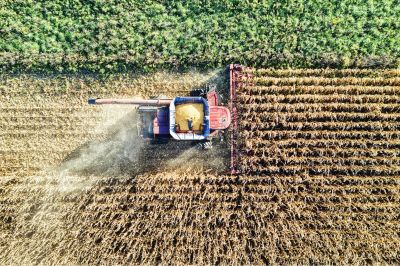
“With smart plant identification systems, farmers can pinpoint issues down to the individual plant, leading to better resource management and crop performance.”
Core Benefits of Using Smart Systems for Plant ID
Here are some of the standout benefits of using smart systems for plant identification:
- Early Disease Detection: Catching problems before they become visible can save entire crops from devastation.
- Improved Resource Management: Use water, fertilizers, and pesticides more efficiently, targeting only the areas that need them.
- Enhanced Crop Quality: By understanding the specific needs of each plant, you can improve the overall quality of your produce.
These are just a few of the ways that smart plant identification systems can make a real difference on your farm.
Unearthing the Science Behind Plant Identification
At the heart of these technologies is a deep understanding of plant science. It’s not just about tech, it’s about applying biological knowledge in practical, impactful ways.
The Basics of Plant ID: Understanding Plant Anatomy
To make the most of these tools, it’s helpful to have a basic grasp of plant anatomy. Knowing the parts of a plant and how they function can help you understand the feedback you get from your smart systems. For instance, if an app indicates that a leaf is showing signs of disease, knowing the structure of leaves can help you spot similar issues in the future.
Decoding the Language of Leaves: Patterns and Markers
Leaves can tell you a lot about a plant’s health. Here’s how to decode their language:
- Color: A change in leaf color can indicate nutrient deficiencies or disease.
- Texture: Unusual bumps or roughness might be a sign of pests or infections.
- Shape: Distorted leaves could be a symptom of environmental stress or genetic issues.
Paying attention to these patterns and markers can catch problems early and address them before they escalate.
But remember, while your observations are valuable, smart plant identification systems can detect issues that are invisible to the naked eye. They can interpret the subtlest of signals, offering a level of detail that’s impossible with a manual check.
Making the Most of Smart Identification in Your Farm
Integrating these advanced tools into your farming practices can seem daunting, but it doesn’t have to be. Let’s walk through some steps to get you started.
Integrating Technology with Traditional Farming Practices
First, assess what aspects of your current operation could benefit most from smart plant identification. Is it disease control, nutrient management, or something else? Once you’ve pinpointed the area, start small. Choose one technology to implement, and as you grow more comfortable, you can expand your toolkit.
Training yourself and your team is also crucial. Many of these tools are designed to be user-friendly, but a little knowledge can go a long way in maximizing their potential. Look for workshops, online courses, or even local agricultural extension services that offer training in smart agriculture tools.
Most importantly, keep an open mind. Traditional knowledge and experience are invaluable, but when combined with these new technologies, they can lead to unprecedented levels of success for your farming business.
Training and Capacity Building for Modern Agricultural Workforce
To make the most of these technologies, farmers need to be well-versed in their operation and application. It’s not just about having the tools but knowing how to use them effectively. Capacity building is, therefore, a vital component of integrating smart plant identification systems into farming practices.
Invest time in training sessions, either online or through local agricultural programs.
Learning how to interpret data from these systems and apply it to your farming practices will pay off in increased efficiency and productivity. Remember, the goal is to complement your farming skills with technology, not replace them.
Think Smart, Farm Smart: A Path Forward
Embracing Change for Enhanced Yield and Sustainability
Change can be intimidating, but in the context of agriculture, it’s a necessity for growth and sustainability. Embracing smart plant identification systems can lead to enhanced yields and more sustainable farming practices. These technologies minimize waste, optimize inputs like water and fertilizer, and ultimately, support the health of the ecosystem.
How Continuous Innovation Keeps You Ahead
Staying ahead in farming today means being open to innovation. Continuous learning and adapting new technologies are what will keep you competitive. As plant identification systems evolve, so too should your farming strategies. Keeping abreast of the latest developments ensures that you’re always using the best tools available to manage your crops.
Moreover, as these technologies become more widespread, they’re also becoming more affordable and accessible. This democratization of smart farming tools means that farms of all sizes can take advantage of the benefits they offer.
Remember, the goal of smart agriculture is not to overwhelm you with data and gadgets but to provide you with actionable insights that make farming more precise, more productive, and more sustainable.
- Invest in training and capacity building to make the most of smart plant identification tools.
- Embrace change and innovation for better yields and sustainable farming practices.
- Stay updated on the latest developments in smart agriculture to maintain a competitive edge.
FAQs
What Are the Most User-Friendly Plant ID Apps?
For those starting out, PictureThis and PlantSnap are two of the most user-friendly plant ID apps available. They are intuitive and can quickly help identify plants and potential diseases with just a snapshot from your smartphone.
Is Advanced Plant ID Technology Cost-Effective for Small Farms?
Yes, advanced plant ID technology is becoming more cost-effective, even for small farms. Many solutions offer scalable pricing or even free versions with essential features. The key is to start small and scale up as you see the value they bring to your operations.
How Do Plant Identification Systems Improve Crop Yield?
Plant identification systems improve crop yield by providing precise information that allows for targeted care of plants. By identifying nutrient deficiencies, water stress, or disease early, you can take action to mitigate these issues before they impact your yield.
For example, a sensor that detects a lack of nitrogen in the soil can prompt you to fertilize, ensuring your plants get the nutrients they need to grow strong and healthy.
Can Plant ID Tools Help in Controlling Pests and Diseases?
Absolutely. Plant ID tools, especially those equipped with AI and image recognition, can detect the early signs of pests and diseases before they become visible to the naked eye. Early detection means you can take swift action to control the problem, often with more environmentally friendly methods and less reliance on chemicals.
What are the First Steps to Transition to Smart Plant Identification?
The first step in transitioning to smart plant identification is to identify the needs of your farm and research which tools best meet those needs. Start with a user-friendly mobile app for plant identification and gradually integrate more advanced tools like sensors and cloud-based analytics. And don’t forget the importance of training to get the most out of these technologies.
Advancements in smart agriculture are revolutionizing the way we understand and manage plant growth. By using cutting-edge plant identification techniques and systems, farmers and gardeners can now make more informed decisions about the care and maintenance of their plants. These technologies not only help in identifying plant species but also provide valuable information on plant health, soil conditions, and environmental factors that affect growth.

